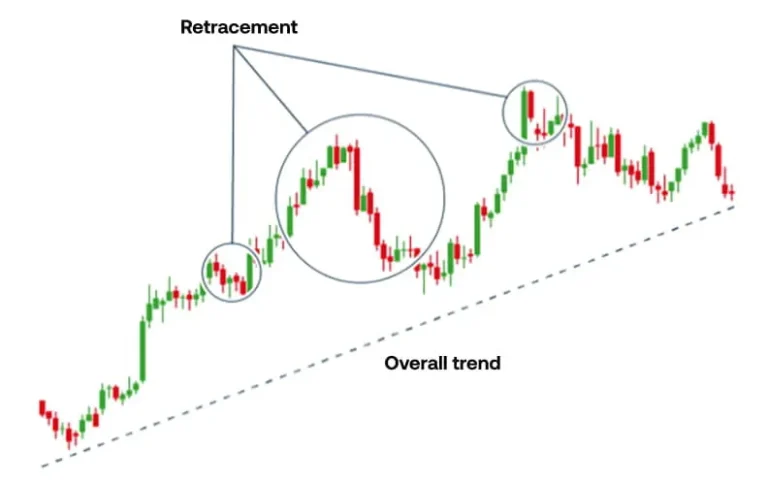Swing trading is a trading strategy that aims to capture short to medium-term gains in stock prices over a period of a few days to several weeks. It's typically used by traders who want to capitalize on market swings without the constant monitoring required in day trading.
- Main Benefit: Potential for significant profits from short to medium-term price movements
- Primary Concern: Exposure to overnight and weekend market risks
- Best For: Traders with limited time who can't monitor markets constantly
- Important Note: Requires a solid understanding of technical analysis and risk management
Comprehensive Swing Trading Pros and Cons
This table outlines the advantages and disadvantages of swing trading, providing a balanced view to help traders make informed decisions about this popular trading strategy.
| Pros | Cons |
|---|---|
| Potential for significant profits | Exposure to overnight and weekend market risks |
| Less time-intensive than day trading | Missed opportunities for longer-term trends |
| Flexibility in trading schedule | Requires skill in technical analysis |
| Capitalizes on short-term price movements | Potential for substantial losses due to market volatility |
| Lower stress levels compared to day trading | Risk of overtrading and emotional decision-making |
| Allows for use of both technical and fundamental analysis | May miss intraday trading opportunities |
| Can be done part-time alongside other commitments | Requires constant learning and adaptation to market conditions |
| Potential for higher returns than buy-and-hold strategies | Transaction costs can accumulate with frequent trading |
| Opportunity to diversify trading strategies | Potential for higher taxes due to short-term capital gains |
| Allows for better risk management than day trading | Difficulty in accurately timing market swings |
| Can take advantage of both bullish and bearish trends | Susceptibility to false signals and market noise |
| Provides more time for analysis compared to day trading | Risk of holding positions during unexpected news events |
| Allows for use of stop-loss orders to limit potential losses | Requires discipline to stick to trading plan |
| Can be applied to various financial instruments | Potential for analysis paralysis due to multiple indicators |
| Offers a balance between short-term and long-term strategies | May lead to missed opportunities in other investment strategies |
| Allows for better work-life balance than day trading | Risk of becoming too emotionally attached to positions |
| Can capitalize on earnings announcements and news events | Requires continuous monitoring of open positions |
| Provides opportunities in various market conditions | Potential for increased stress during holding periods |
| Allows for use of leverage to amplify gains | Leverage can also amplify losses |
| Can be less affected by short-term market noise | Risk of missing out on long-term compound growth |
| Offers potential for consistent income generation | Requires significant capital to generate substantial income |
| Allows for better position sizing and risk allocation | Can be challenging during periods of low market volatility |
| Provides opportunities to learn from each trade | Risk of overconfidence after a series of successful trades |
| Can be combined with other trading strategies | May require multiple attempts to find a profitable strategy |
| Allows for use of various chart patterns and indicators | Risk of information overload from multiple analysis tools |
| Provides a middle ground between day trading and investing | May not be suitable for extremely risk-averse individuals |
| Can take advantage of sector rotations and trends | Requires constant adaptation to changing market dynamics |
| Allows for better emotional management than day trading | Risk of becoming too focused on short-term gains |
| Provides opportunities for both small and large accounts | Smaller accounts may face limitations in diversification |
| Can be less affected by high-frequency trading algorithms | Still vulnerable to market manipulation and sudden shifts |
Swing Trading Market Dynamics
This table provides key statistics and market data related to swing trading, offering insights into its prevalence, performance, and trends in the financial markets.
| Statistical Analysis & Market Data | |
|---|---|
| Average holding period for swing trades | 2 to 6 days |
| Typical profit target for swing trades | 5% to 10% per trade |
| Percentage of retail traders using swing trading | Approximately 30% |
| Average number of swing trades per month | 10 to 15 |
| Typical stop-loss percentage for swing trades | 2% to 5% of position size |
| Percentage of swing traders who are profitable | Around 35% to 40% |
| Most common markets for swing trading | Stocks, forex, and commodities |
| Average annual return for successful swing traders | 15% to 30% |
| Percentage of swing trades that use leverage | Approximately 60% |
| Growth rate of swing trading popularity (annually) | 8% to 12% |
Swing Trading Technical Requirements
This table outlines the essential technical specifications and requirements for effective swing trading, including tools, skills, and market conditions necessary for success.
| Technical Specifications & Requirements | |
|---|---|
| Minimum account balance recommended | $10,000 to $25,000 |
| Essential technical analysis tools | Moving averages, RSI, MACD, Bollinger Bands |
| Recommended trading platform features | Real-time charting, multiple timeframes, customizable indicators |
| Optimal internet connection speed | At least 10 Mbps for stable trading |
| Key market data subscriptions | Level II quotes, real-time news feeds |
| Minimum computer specifications | 8GB RAM, i5 processor or equivalent, dual monitors |
| Required trading software | Advanced charting software, trade journal application |
| Essential risk management tools | Stop-loss orders, position sizing calculator |
| Recommended trading education | Technical analysis course, risk management training |
| Legal requirements | Compliance with local trading regulations, tax reporting |
Swing Trading Cost and Value Breakdown
This table provides a comprehensive analysis of the costs associated with swing trading and the potential value it can offer, helping traders understand the financial aspects of this strategy.
| Cost & Value Analysis | |
|---|---|
| Average commission per trade | $5 to $10 for stocks, 1-2 pips for forex |
| Typical spread costs | 0.1% to 0.3% of trade value |
| Annual subscription costs for tools | $500 to $2,000 for premium platforms |
| Potential annual returns | 20% to 40% for skilled traders |
| Average capital requirement | $25,000 to $50,000 for optimal trading |
| Education and training costs | $1,000 to $5,000 for comprehensive courses |
| Tax implications | Short-term capital gains tax (varies by country) |
| Overnight holding costs | 0.01% to 0.1% per night for leveraged positions |
| Risk of loss per trade | 1% to 2% of account balance (recommended max) |
| Time value (hours per week) | 15 to 25 hours for research and trading |
Swing Trading vs Other Trading Styles
This table compares swing trading with other popular trading styles, highlighting the key differences in approach, time commitment, and potential outcomes for traders.
| Comparative Analysis & Alternatives | |
|---|---|
| Time commitment vs day trading | Less intensive, 2-3 hours daily vs 6-8 hours for day trading |
| Profit potential vs long-term investing | Higher short-term gains, lower long-term compound growth |
| Risk level vs position trading | Moderate risk, higher than position trading but lower than day trading |
| Capital requirements vs scalping | Lower capital needs, typically 50% less than scalping |
| Stress level vs other styles | Moderate, less than day trading but more than long-term investing |
| Technical analysis reliance vs fundamental analysis | Heavier reliance on technical analysis compared to fundamental strategies |
| Flexibility vs other trading styles | More flexible than day trading, less than position trading |
| Transaction costs vs buy-and-hold | Higher due to more frequent trading, typically 2-3 times more |
| Learning curve vs other styles | Moderate, easier than day trading but harder than passive investing |
| Emotional discipline required vs other styles | High, but less than day trading and more than long-term investing |
Future of Swing Trading
This table explores the anticipated trends and developments in swing trading, offering insights into how this trading style may evolve in the coming years.
| Future Outlook & Industry Trends | |
|---|---|
| AI and machine learning integration | Expected to enhance pattern recognition and trade execution by 30-40% in the next 5 years |
| Mobile trading platforms growth | Projected 50% increase in mobile-based swing trading by 2025 |
| Cryptocurrency swing trading | Anticipated to grow by 100% in the next 3 years as markets mature |
| Social trading influence | Expected 25% of swing traders to engage in social trading platforms by 2026 |
| Regulatory changes | Increased scrutiny on leverage and day trading rules may benefit swing trading |
| Environmental, Social, and Governance (ESG) impact | Growing importance in swing trading strategies, projected 20% of trades to consider ESG factors by 2027 |
| High-frequency trading competition | May reduce some swing trading opportunities in highly liquid markets by 10-15% |
| Automated trading systems | Expected to be used by 40% of swing traders for partial or full automation by 2028 |
| Global market access | Increased access to international markets, potentially expanding swing trading opportunities by 30% |
| Education and skill development | Online swing trading education market projected to grow by 15% annually through 2030 |







